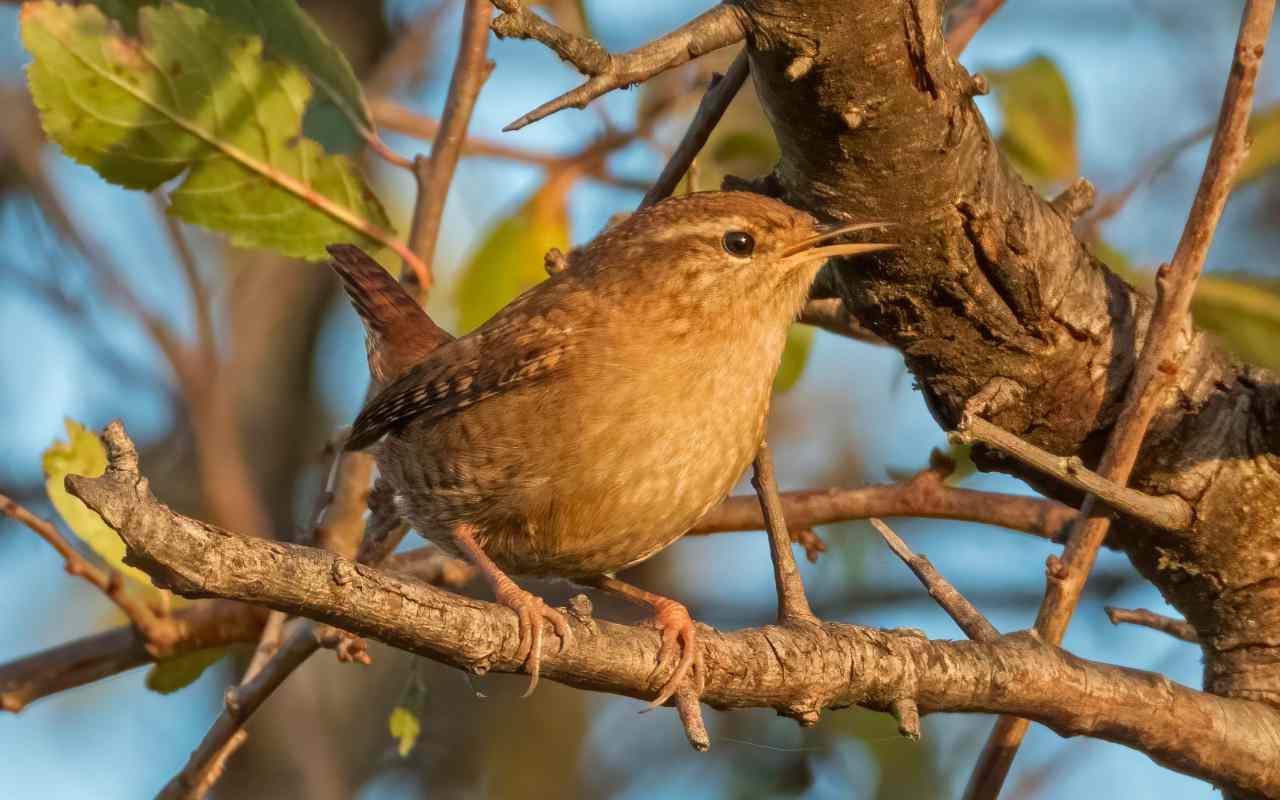HEADTURNED Articles
The Vanishing Chorus: Saving Breeding Birds
A Call to Action for Biodiversity Restoration
Empty Skies, Empty Gardens
Introduction
The dramatic decline in breeding bird populations across the UK and worldwide is a stark warning of biodiversity loss and ecological imbalance. Once-vibrant skies now stand eerily quiet, gardens bereft of chirping life, and forests silenced.
This catastrophe is the result of habitat destruction, climate change, pollution, and unsustainable agricultural practices.
If left unchecked, the repercussions will ripple across ecosystems, leaving a barren, unrecognisable world for future generations. It's time to reverse this trajectory by understanding the root causes, mitigating the damage, and fostering conditions for nature to thrive once more.

Empty Skies, Empty Gardens
The Decline of Breeding Birds: A Global Crisis
Vanishing Avian Populations
In the last five decades, the UK has lost over 40 million birds, while globally, three billion birds have disappeared since 1970. Iconic species like the skylark, nightingale, and house sparrow are dwindling. These losses are not just numbers—they signify the unraveling of ecological networks that sustain life on Earth.
To grasp the gravity of these figures, it's crucial to recognise the interconnectedness of bird populations with broader ecological systems. Birds are not merely observers of ecosystems; they are active participants. They aerate soils, control pest populations, and assist in the pollination of numerous plant species. A decline in their populations can ripple out to other species, creating a domino effect that affects everything from insect populations to mammalian predators that rely on birds as a food source.
Globally, regions such as North America and Europe have seen the sharpest declines due to intensive agricultural practices and habitat fragmentation. The devastation in tropical areas, where deforestation for palm oil and other monocultures continues unabated, poses an equally alarming threat to migratory birds that rely on these areas for survival during the winter months.
Root Causes of Decline
- Habitat Destruction: Urbanisation, deforestation, and intensive farming have destroyed critical nesting and feeding grounds. The expansion of human settlements often comes at the expense of wetlands, forests, and grasslands, each critical habitats for various bird species. Roads and infrastructure carve through migration paths, leading to fatal collisions and disrupted routes.
- Climate Change: Rising temperatures and erratic weather patterns disrupt migration and breeding cycles. For instance, earlier springs cause mistimed migrations, with birds arriving after their primary food sources have peaked, leading to starvation and lower reproductive success.
- Pollution: Pesticides, plastics, and industrial waste poison habitats and food sources. Neonicotinoids, a class of insecticides, have been particularly detrimental, killing off the insects many bird species depend on for survival.
- Monoculture Farming: Vast fields devoid of hedgerows eliminate safe havens for birds, insects, and other wildlife. The homogenisation of landscapes reduces biodiversity and depletes the resources birds need to thrive.
- Invasive Species: Predation and competition from non-native species further strain native bird populations. Species like the domestic cat, introduced to areas with vulnerable bird populations, have become significant predators of songbirds and ground-nesting birds.
Empty Skies, Empty Gardens
The Impact of Losing Breeding Birds
Ecological Collapse
Birds play pivotal roles in pollination, seed dispersal, and pest control. Their loss cascades through the food chain, disrupting ecosystems and weakening nature's resilience. Without birds, insect populations explode unchecked, while plants fail to reproduce effectively, exacerbating biodiversity collapse.
Consider the example of the pollination crisis: many bird species, such as hummingbirds and certain types of finches, are vital pollinators for plants that are not serviced by bees. Without these avian pollinators, specific plant species face extinction, which in turn impacts animals that rely on those plants for food and shelter.
Similarly, birds of prey regulate populations of small mammals like rodents. A decline in their numbers can lead to surges in these populations, which then affect agriculture and spread diseases like Lyme disease. The absence of birds creates a vacuum that destabilises entire ecosystems.
Psychological and Cultural Loss
For many, birds symbolise freedom and hope. Their absence leaves a void not only in nature but also in human hearts. Future generations may never know the joy of waking to birdsong or seeing swallows dance in summer skies.
Culturally, birds have been woven into folklore, literature, and art across civilisations. Their decline signifies not just the loss of ecological wealth but also a diminishing of cultural heritage. Artists, poets, and writers inspired by birds' movements and melodies may find themselves disconnected from this muse, leading to a cultural impoverishment parallel to the ecological one.
Empty Skies, Empty Gardens
Empty Skies: A False Normal
Children today grow up in a world where birdless gardens, hedgeless fields, and silent woods are the norm. This disconnect from nature fosters apathy, making it harder to mobilise efforts for conservation. We must remind ourselves and the young that a world rich in biodiversity is not just an aspiration but a necessity.
This normalisation of emptiness has psychological ramifications, including increased anxiety and a diminished sense of well-being. Studies have shown that exposure to nature—including birdlife—has profound positive effects on mental health. A world without birdsongs robs future generations of these healing experiences.
Empty Skies, Empty Gardens
Regenerating Breeding Bird Populations
Rewilding Habitats
- Restoring Hedgerows: Planting hedges and preserving field margins provide nesting sites and food sources. Hedgerows also act as corridors that connect fragmented habitats, allowing species to move freely and maintain genetic diversity.
- Creating Wetlands: Protecting and expanding wetlands supports waterfowl and other bird species. Wetlands act as natural filters, improving water quality while offering shelter to migratory and resident birds alike.
- Urban Green Spaces: Cities can be havens for birds through rooftop gardens, birdhouses, and native plantings. Incorporating biodiversity into urban planning ensures that birds can coexist alongside humans, even in densely populated areas.
Sustainable Practices
- Reducing Pesticides: Adopting organic farming methods safeguards insects that birds rely on. Encouraging the use of integrated pest management (IPM) strategies reduces the dependency on harmful chemicals while maintaining crop yields.
- Diversifying Crops: Encouraging mixed-use farming and agroforestry benefits ecosystems. These practices provide a mosaic of habitats that can support a wide variety of species.
- Responsible Consumption: Supporting eco-friendly products reduces environmental footprints. Consumers can drive demand for sustainably sourced products, pushing industries toward greener practices.
Advocacy and Education
- Raising Awareness: Public campaigns can highlight the plight of birds and inspire action. Visual media, documentaries, and social media campaigns can reach broader audiences, fostering empathy and engagement.
- School Programs: Teaching children about birds fosters empathy and stewardship. Schools can organise birdwatching trips, habitat restoration projects, and creative activities to deepen students' connection to nature.
- Public Science: Engaging communities in bird counts and monitoring builds connections with nature. Apps and platforms that allow people to report bird sightings empower them to contribute directly to conservation efforts.
Empty Skies, Empty Gardens
A Future of Flourishing Skies
Conservation and Biodiversity Systems
The road to recovery involves establishing robust conservation frameworks:
- Legal Protections: Strengthen policies to safeguard habitats and regulate harmful practices. Governments must prioritise the enforcement of laws that protect critical bird habitats.
- Biodiversity Corridors: Create connected landscapes to facilitate migration and breeding. These corridors ensure that birds can navigate between nesting and feeding grounds without interruption.
- Research and Innovation: Invest in studies to understand and mitigate emerging threats. Collaborative efforts between scientists, conservationists, and policymakers can produce innovative solutions to complex ecological challenges.
Giving Back to Nature
Nature's generosity demands reciprocity. We must transition from exploitation to restoration, ensuring every creature—bird, insect, or mammal—has a fighting chance to thrive. By planting trees, preserving water bodies, and curbing pollution, we can rebuild the web of life.
Empty Skies, Empty Gardens
Call to Action
Restore Our Natural World
Reversing the decline of breeding birds is not just an environmental issue—it is a moral imperative. Every individual, community, and government has a role to play in rebuilding our natural ecosystems. Here's how you can contribute:
Action Steps:
- Protect and Restore Habitats: Advocate for the preservation of forests, wetlands, and hedgerows. Support local rewilding projects.
- Adopt Sustainable Practices: Reduce your environmental footprint by choosing eco-friendly products and supporting organic farming.
- Engage in Community Conservation: Participate in bird counts, habitat clean-ups, and local conservation initiatives.
- Educate and Advocate: Share knowledge about the importance of biodiversity. Encourage policymakers to enforce and strengthen wildlife protection laws.
- Support Conservation Organisations: Donate to or volunteer with organisations dedicated to protecting bird species and their habitats.
By taking these steps, we can transform empty skies into flourishing havens for birds once more. Together, we can ensure that the beauty and vitality of nature endure for generations to come.
